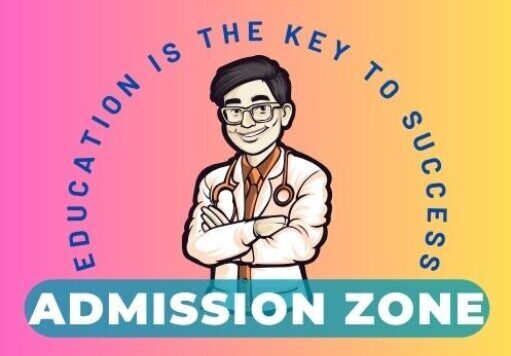Congratulations, MBBS graduate! You’ve conquered one of the toughest academic journeys, and now a whole new world of specialization awaits. Choosing a Post-Graduate (PG) branch after MBBS is one of the most pivotal decisions of your medical career. It shapes your future, your daily work, and your impact on healthcare. This guide is designed to simplify this complex choice, offering insights into the diverse PG branches available and how to pick the perfect fit for you.
Entrance Exams
The gateway to almost all PG medical specializations in India is through competitive entrance examinations.
- NEET PG (National Eligibility cum Entrance Test for Post-Graduation): This is the single most important exam for admission to MD/MS and PG Diploma courses across most medical colleges in India, including government and private institutions. It’s a highly competitive exam, testing your knowledge across all 19 MBBS subjects.
- INI-CET (Institute of National Importance Combined Entrance Test): For those aspiring to study in prestigious institutions like AIIMS (All India Institute of Medical Sciences), JIPMER (Jawaharlal Institute of Postgraduate Medical Education and Research),1 PGIMER (Postgraduate Institute of Medical Education and Research), and NIMHANS (National Institute of Mental Health and Neurosciences),2 INI-CET is the entrance exam. These institutions often offer slightly different curricula and exposure.
Cracking these exams requires dedicated preparation, a deep understanding of concepts, and strategic test-taking skills.
Types of PG Degrees
Once you clear an entrance exam, you’ll be aiming for one of these primary PG degrees:
- MD (Doctor of Medicine): This is a postgraduate degree primarily focused on non-surgical medical specializations. Examples include General Medicine, Pediatrics, Dermatology, Radiology, and Anesthesiology. MD programs typically last for 3 years.
- MS (Master of Surgery): As the name suggests, this degree is for surgical specializations. Branches like General Surgery, Orthopaedics, Ophthalmology, and ENT (Ear, Nose, Throat) fall under MS. Like MD, MS programs also generally span 3 years.
- PG Diploma Courses: These are shorter duration courses, usually 1 or 2 years, offering a more focused training in a specific area. While not as comprehensive as an MD/MS, they can be a stepping stone or a suitable option for those looking for quicker specialization. Examples include DGO (Diploma in Gynaecology and Obstetrics), DCH (Diploma in Child Health), and DMRD (Diploma in Medical Radiodiagnosis).
- DNB (Diplomate of National Board): This is another highly respected postgraduate qualification awarded by the National Board of Examinations (NBE). DNB courses are offered in various hospitals and institutions across India. A DNB qualification is recognized as equivalent to an MD/MS degree.
- Direct 6-Year M.Ch./DM Courses: For certain highly specialized surgical fields like Neurosurgery or Cardiac Surgery, some institutions offer direct 6-year M.Ch. (Magister Chirurgiae) programs right after MBBS, bypassing the need for a prior MS degree. Similarly, some DM (Doctorate of Medicine) super-specialty programs might also have direct entry after MBBS.
| S.No. | Course |
|---|---|
| 1 | MD (Doctor of Medicine) |
| 2 | MS (Master of Surgery) |
| 3 | PG Diploma Courses |
| 4 | DNB (Diplomate of National Board) |
| 5 | Direct 6-Year M.Ch/DM Courses |
Traditional Branches of Post-Graduate Studies after MBBS
These are the well-established and widely recognized branches that generations of doctors have pursued:
Clinical Branches (Patient-Facing):
- MD General Medicine: The foundation of internal medicine, dealing with a wide range of adult diseases. It’s often a stepping stone to super-specialties like Cardiology, Neurology, Gastroenterology, etc.
- MS General Surgery: The basis for all surgical specializations, involving diagnosis and treatment of conditions requiring surgical intervention. It leads to super-specialties like Urology, Plastic Surgery, Cardiothoracic Surgery, etc.
- MD Pediatrics: Specializing in the health and medical care of infants, children, and adolescents.
- MD Dermatology, Venereology, & Leprosy (DVL): Focuses on skin, hair, nail diseases, sexually transmitted infections, and leprosy.
- MD Radiodiagnosis (Radiology): Involves using imaging techniques (X-rays, CT, MRI, Ultrasound) to diagnose diseases. Less patient interaction, more diagnostic work.
- MD Anesthesiology: Managing pain and care of patients before, during, and after surgery, childbirth, and other medical procedures.
- MS Obstetrics & Gynaecology (OBG): Deals with pregnancy, childbirth, and the health of the female reproductive system. It can be an MD or MS in some universities.
- MS Orthopaedics: Specializing in the musculoskeletal system – bones, joints, ligaments, tendons, and muscles.
- MS Ophthalmology: Focuses on the eye and its associated structures, including vision care.
- MS Otorhinolaryngology (ENT): Deals with diseases of the ear, nose, and throat.
- MD Psychiatry: Specializing in mental health disorders, their diagnosis, treatment, and prevention.
- MD Tuberculosis & Respiratory Medicine (Pulmonary Medicine/Chest Medicine): Deals with diseases of the lungs and respiratory tract.
Para-Clinical Branches (Lab & Community-Focused):
- MD Pathology: The diagnostic backbone of medicine, analyzing tissues and fluids to diagnose diseases. Less direct patient interaction.
- MD Microbiology: Study of microorganisms (bacteria, viruses, fungi, parasites) and their role in human health and disease.
- MD Pharmacology: Focuses on drugs, their effects, and mechanisms of action. Often involves research and drug development.
- MD Community Medicine (Preventive & Social Medicine – PSM): Deals with public health, disease prevention, health promotion, and epidemiology.
- MD Forensic Medicine & Toxicology (FMT): Applies medical knowledge to legal issues, often involving post-mortems and toxicology analysis.
- MD Transfusion Medicine / Immunohematology & Blood Transfusion: Specializing in blood banking, blood component therapy, and related areas.
Pre-Clinical Branches (Academic/Research Focused):
- MD Anatomy: Study of the structure of the human body.
- MD Physiology: Study of the functions of the human body.
- MD Biochemistry: Study of the chemical processes within living organisms.
These branches are often pursued by those with a strong inclination towards teaching and research.
Popular & In-Demand Branches
Certain branches consistently remain highly sought after due to various factors like lifestyle, earning potential, and demand in the healthcare system.
- Radiodiagnosis: High demand due to increasing reliance on imaging for diagnosis. Generally offers a good work-life balance compared to other clinical branches.
- Dermatology: High demand, good lifestyle, and excellent private practice potential.
- General Medicine & Pediatrics: Always in demand, as they are foundational specialties and lead to super-specialties.
- Anesthesiology: Essential for all surgical procedures, generally offers a more predictable routine than core surgery.
- Orthopaedics: High patient load due to trauma, lifestyle diseases, and aging population.
- Ophthalmology & ENT: Both offer a mix of medical and surgical management, with good private practice scope.
- Pathology: For those who prefer a less patient-facing role, with a focus on diagnostics and lab work.
Emerging Branches of Post-Graduate Studies after MBBS
The medical field is constantly evolving, leading to the rise of new and specialized branches:
- MD Emergency Medicine: A rapidly growing field focusing on immediate diagnosis and treatment of acute illnesses and injuries. High adrenaline, critical decision-making.
- MD Nuclear Medicine: Utilizes radioactive substances for diagnosis and treatment of diseases, particularly in oncology and cardiology.
- MD Physical Medicine & Rehabilitation (PMR): Focuses on restoring function and quality of life for people with physical impairments or disabilities.
- MD Geriatrics: Specializing in the healthcare of elderly people, a growing demographic globally.
- MD Family Medicine: A comprehensive approach to healthcare for individuals and families across all ages, genders, and diseases. Gaining traction in primary care settings.
- DM/M.Ch. in various super-specialties: While not strictly “new,” the increasing demand for super-specialists like Robotic Surgeons, Interventional Cardiologists, Medical Oncologists, and Neurosurgeons means these fields are constantly expanding and evolving.
Factors to Consider When Choosing a Post-Graduate Branch after MBBS
This is arguably the most crucial section. Don’t just follow the crowd or chase high ranks.
- Your Interest & Aptitude: This should be paramount. Are you fascinated by the human mind (Psychiatry)? Do you love working with your hands (Surgery)? Are you a diagnostic puzzle solver (Radiology/Pathology)? Choose something you genuinely enjoy and are good at.
- NEET PG Rank/Score: Realistically assess your rank. Highly competitive branches will require a top score. Be prepared to be flexible if your rank doesn’t match your dream branch.
- Future Scope & Demand: Research the current and projected demand for specialists in your chosen field. Are there enough job opportunities? Is the field growing?
- Lifestyle & Work-Life Balance: Be honest with yourself. Are you prepared for long, unpredictable hours and emergency calls (common in Surgery, Emergency Medicine)? Or do you prefer a more predictable routine (e.g., Dermatology, Pathology)?
- Earning Potential: While money shouldn’t be the sole driver, it’s a practical consideration. Research the earning potential for various specialties in both government and private setups.
- Duration of Course & Further Education: Are you willing to commit to an additional 3 years for MD/MS, and then potentially another 3 years for a super-specialty (DM/M.Ch)?
- Mentorship & Exposure During Internship: Pay close attention during your internship. Which departments did you enjoy working in? Which doctors inspired you? This hands-on experience is invaluable.
- Personal Strengths: Are you detail-oriented? A good communicator? Calm under pressure? Your personality traits often align better with certain specialties.

FAQ’s
Ans- A PG (Postgraduate) branch after MBBS is a specialization (e.g., MD, MS, Diploma) chosen for advanced medical training in a specific field like Cardiology, Surgery, or Radiology.
Ans- After MBBS, admission to PG programs (MD/MS/Diploma) in India primarily requires clearing the NEET PG exam, followed by centralized counseling and document verification.
Ans- NEET PG (National Eligibility cum Entrance Test for Postgraduate) is India’s single entrance exam for admission to MD, MS, and PG Diploma medical courses.
Ans- Applicants need an MBBS degree, a completed (or soon-to-be-completed) one-year internship, and MCI/NMC/SMC provisional/permanent registration. Foreign graduates need FMGE.
Connect with Us
Start your medical educational journey with the Admission Zone! Contact us today on 9205488482/ 7599994403 or WhatsApp us to explore a world of educational possibilities in the state and secure your admission to a brighter future.
Conclusion
Choosing a PG branch after MBBS is a monumental decision that requires careful thought, introspection, and thorough research. It’s a journey that will define your identity as a doctor. By understanding the entrance exams, the types of degrees, the traditional and emerging branches, and critically evaluating the factors that matter most to you, you can make an informed choice that leads to a fulfilling and impactful medical career. Remember, the best branch is the one that aligns with your passion, aptitude, and long-term goals. All the best in navigating this exciting next chapter.

